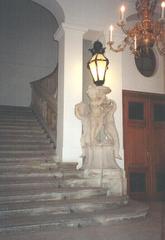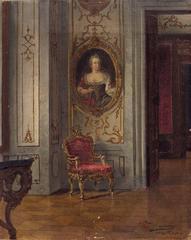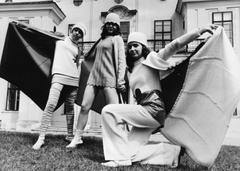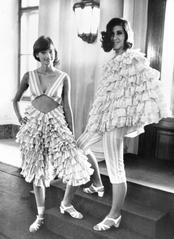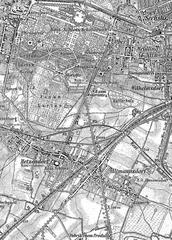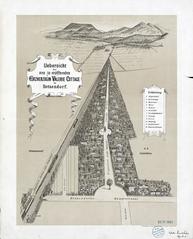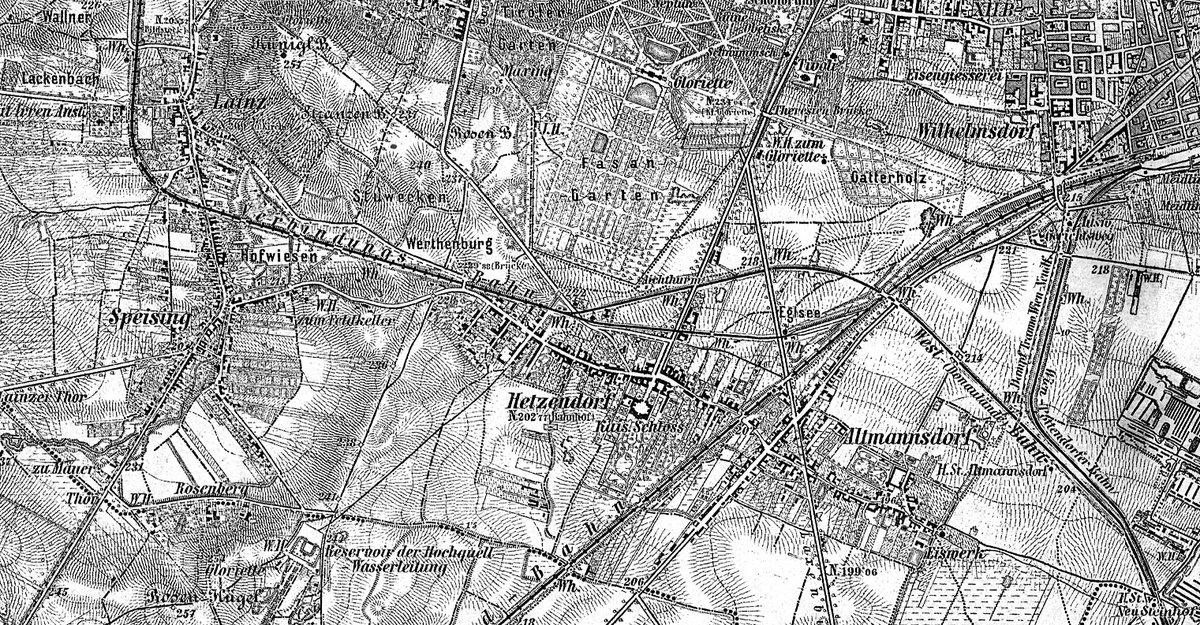
Schloss Hetzendorf Visiting Hours, Tickets, and Vienna Historical Sites Guide
Date: 14/06/2025
Introduction: The Legacy of Schloss Hetzendorf in Vienna
Tucked away in Vienna’s 12th district (Meidling), Schloss Hetzendorf is one of the city’s most elegant yet underappreciated Baroque and Rococo jewels. Built originally as a country retreat in the late 17th century, the palace was transformed by Habsburg patronage—most notably Empress Maria Theresa—into an exquisite residence boasting grand architecture, lavish interiors, and beautifully landscaped gardens. Today, Schloss Hetzendorf stands at the intersection of history and innovation as the home of Vienna’s prestigious Fashion School (Modeschule Hetzendorf), offering a unique blend of imperial heritage and modern creativity.
The palace’s story is closely linked to the Habsburg dynasty, hosting figures such as Empress Elisabeth (“Sisi”) and Archduchess Sophie, and is renowned for its artistic and architectural contributions by masters like Johann Lucas von Hildebrandt, Nicolò Pacassi, Antonio Beduzzi, and Lorenzo Mattielli. While its primary role is now educational, Schloss Hetzendorf remains accessible to the public during special events, select guided tours, and fashion shows. This guide provides comprehensive details on visiting hours, tickets, accessibility, and nearby attractions, while illuminating the palace’s historical significance and ongoing cultural relevance (Wien Geschichte Wiki; Modeschule Hetzendorf; Vienna Unwrapped).
Contents
- Origins and Early Development
- Architectural Evolution
- Habsburg Patronage and Historical Role
- 20th Century Transformation and Adaptive Reuse
- Architecture & Interiors: Artistic Highlights
- Gardens and Landscape
- Visiting Hours, Tickets, and Accessibility
- Events, Guided Tours, and Nearby Attractions
- Visuals and Multimedia Resources
- Frequently Asked Questions (FAQ)
- Plan Your Visit: Practical Tips and Recommendations
- Sources and Further Reading
Origins and Early Development
The estate’s roots trace back to 1694, when a modest country house was built for merchant Johann Lucas von Hildebrandt, who would later become one of Austria’s defining Baroque architects (Wien Geschichte Wiki). By the early 18th century, the property changed hands among Vienna’s elite before being acquired by Empress Maria Theresa in the 1740s, who saw its potential as a royal retreat and commissioned its transformation into a refined palace.
Architectural Evolution
Schloss Hetzendorf’s architectural history is a showcase of Baroque and Rococo artistry. Hildebrandt’s original design featured the classic Baroque emphasis on symmetry, grandeur, and ornamental detail. Major renovations under court architect Nicolò Pacassi (1743–1750) introduced a central pavilion, ornate salons, and a Rococo chapel. The palace’s interiors are adorned with spectacular frescoes, gilded mirrors, and intricate woodwork, while the gardens were reshaped in the French formal style (Burgen-Austria).
Habsburg Patronage and Historical Role
As a favored Habsburg residence, Schloss Hetzendorf played host to private family gatherings, summer retreats, and significant events in imperial history. Empress Maria Theresa and her children frequented the palace, and in the 19th century, Archduchess Sophie made it her home, further elevating its status. Empress Elisabeth, known as “Sisi,” also spent part of her childhood here (Vienna Unwrapped).
The palace was a site of mourning after the 1914 assassination of Archduke Franz Ferdinand and a refuge for the royal family during the final years of the Austro-Hungarian Empire (Wien.gv.at). In 1929, Empress Zita, the last Empress of Austria, resided briefly before her exile, marking the end of the Habsburg era at Hetzendorf.
20th Century Transformation and Adaptive Reuse
After the monarchy’s dissolution in 1918, Schloss Hetzendorf was nationalized and repurposed. In 1946, it became the headquarters of the Modeschule Hetzendorf, Vienna’s renowned fashion school (Modeschule Hetzendorf). This adaptive reuse has preserved the palace’s historic fabric while infusing it with new life and creativity, as students and designers work amid Baroque splendor.
Architecture & Interiors: Artistic Highlights
Exterior and Baroque Facade
The palace’s facade exemplifies early 18th-century Baroque, with a two-story central block, ornate stucco, and a series of attic statues (attributed to Lorenzo Mattielli) that dramatize the roofline (castlepedia.org). Sphinxes flank the side entrances, while the complex’s auxiliary buildings create a classic Ehrenhof (cour d’honneur) (geschichtewiki.wien.gv.at).
Interiors
- Vestibule: Features Daniel Gran’s “Aurora” fresco, setting a mythological tone.
- Marble Gallery: Adorned with stucco reliefs and ceiling paintings by Balthasar Hagenmüller, based on Beduzzi’s designs.
- Grand Reception Hall (Festsaal): Lavishly decorated with the “Apollo und die vier Jahreszeiten” fresco, a collaboration between Beduzzi, Carlone, and Messenta.
- Spiegelgalerie (Hall of Mirrors): Gilded mirrors and family portraits.
- Chinesisches Zimmer: Exotic East Asian-inspired décor.
- Chapel: Consecrated in 1745, with period frescoes and sculptural elements (tourmycountry.com).
Gardens and Landscape
The palace is framed by formal French gardens with geometric layouts, parterres, fountains, and tree-lined avenues. Over time, an English-style park was added, offering a tranquil green oasis that hosts various events and supports local wildlife (castlepedia.org; yogajunkies.com). While the gardens are primarily reserved for school use, they open for special public events.
Visiting Hours, Tickets, and Accessibility
- Visiting Hours: Schloss Hetzendorf is not a conventional museum. Public access is typically limited to special events, fashion shows, and occasional guided tours. The chapel is open during school term times, Monday–Friday, 9:00 AM–5:00 PM.
- Tickets: No general admission. Exterior and gardens are open year-round and free. Event tickets (for special tours, shows, or festivals) are available via event organizers or the Modeschule Hetzendorf website.
- Accessibility: The entrance courtyard and chapel are wheelchair accessible; some historic interiors may be less so. Contact the school in advance for specific needs.
- Getting There: Take tram line 62 (“Hetzendorf” stop) or S-Bahn (Hetzendorf station, lines S1, S2, S3, S4, S80). Street parking is limited.
For up-to-date details: Modeschule Hetzendorf, Vienna Museum.
Events, Guided Tours, and Nearby Attractions
- Events: Yoga Junkies Festival (July), fashion shows, exhibitions, weddings, and private functions.
- Guided Tours: Offered occasionally during special events; not on a regular schedule.
- Nearby: Schönbrunn Palace, Theresienbad (historic bathhouse), Meidlinger Markt, local churches.
For details on events and tours, check the Modeschule Hetzendorf official website.
Visuals and Multimedia Resources
Enhance your experience with virtual tours and high-quality images available online. Use SEO-friendly alt tags such as “Schloss Hetzendorf Baroque Palace facade in Vienna” or “Spiegelgalerie interior at Schloss Hetzendorf” for accessibility and search visibility.
View Location on Vienna Tourism Map
Frequently Asked Questions (FAQ)
Q: What are Schloss Hetzendorf’s visiting hours?
A: No regular daily hours; exterior and gardens are open year-round. Chapel access is generally Monday–Friday, 9:00 AM–5:00 PM during school terms. Interior access is limited to special events.
Q: Is there an entrance fee or are tickets required?
A: No fee for gardens/exterior. Tickets may be required for special events—check event listings.
Q: Are guided tours available?
A: Only during select events or by special arrangement.
Q: Is Schloss Hetzendorf wheelchair accessible?
A: The grounds and chapel are accessible; interior access varies by event. Contact the venue in advance.
Q: How do I get there with public transport?
A: Tram 62 (“Hetzendorf” stop) or S-Bahn (Hetzendorf station).
Plan Your Visit: Tips and Recommendations
- Check event calendars for opportunities to access the interiors or attend special festivals.
- Use public transport for convenience (tram 62 or S-Bahn Hetzendorf).
- Combine your visit with nearby attractions such as Schönbrunn Palace or Meidlinger Markt.
- Enjoy local cuisine at the on-site Bierstöckl tavern in the palace’s former stables.
- For up-to-date info, visit Modeschule Hetzendorf.
Conclusion
Schloss Hetzendorf is a captivating blend of imperial history, Baroque artistry, and contemporary culture. While public access to interiors is rare, the palace’s grounds, special events, and fashion shows offer memorable glimpses into Vienna’s storied past and vibrant present. Preservation efforts ensure that this historic landmark remains a living part of the city’s cultural landscape, inspiring both visitors and Vienna’s creative community.
Sources and Further Reading
- Schloss Hetzendorf, Wien Geschichte Wiki, 2024 (Wien Geschichte Wiki)
- Schloss Hetzendorf, Burgen Austria, 2023 (Burgen-Austria)
- Schloss Hetzendorf, Vienna Unwrapped, 2024 (Vienna Unwrapped)
- Schloss Hetzendorf, Wien.gv.at, 2024 (Wien.gv.at)
- Modeschule Hetzendorf, Official Website, 2024 (Modeschule Hetzendorf)
- Bundesdenkmalamt, Schloss Hetzendorf Preservation, 2023 (Bundesdenkmalamt)
- Vienna Museum, Schloss Hetzendorf Location and Info, 2024 (Vienna Museum)


